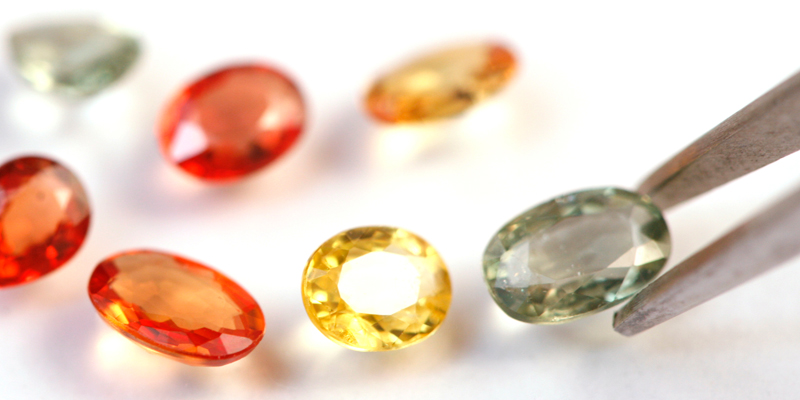In the dazzling world of precious jewelry, stones like diamonds, emeralds, rubies, and sapphires hold a timeless allure. These gems are not just beautiful; they often carry significant financial and emotional value. For buyers, navigating the market for precious jewelry stones can be both exciting and daunting. With a plethora of options and factors to consider, it’s essential to be well-informed before making a purchase. This blog provides valuable advice for buyers to help them make informed decisions when buying precious jewelry stones.
1. Understanding the Four Cs
The Four Cs—Cut, Color, Clarity, and Carat weight—are the standard criteria for evaluating precious gemstones, particularly diamonds. Understanding these aspects is crucial for assessing the quality and value of a stone.
- Cut: The cut refers to the stone’s proportions, symmetry, and polish, which affect its brilliance and sparkle. A well-cut gemstone reflects light beautifully, enhancing its visual appeal.
- Color: The color grade of a gemstone indicates its hue, tone, and saturation. For diamonds, the less color, the better, while for colored gemstones like emeralds and sapphires, rich, vibrant colors are highly prized.
- Clarity: Clarity measures the presence of inclusions or blemishes within the stone. Fewer inclusions generally mean a higher value, though some inclusions can give gemstones like emeralds a unique character.
- Carat Weight: Carat weight measures the size of the gemstone. While larger stones are often more valuable, the other three Cs also play a significant role in determining overall worth.
Buyers should consider these factors collectively, as they all contribute to a stone’s beauty and price.
2. Authenticity and Certification
When purchasing precious jewelry stones, authenticity is paramount. Buyers should ensure that the gemstones are natural and not synthetic or treated in ways that alter their appearance. One of the best ways to guarantee authenticity is by obtaining a certification from a reputable gemological laboratory, such as the Gemological Institute of America (GIA), the American Gem Society (AGS), or the International Gemological Institute (IGI).
A certification provides a detailed report on the stone’s characteristics, including its Four Cs, any treatments it has undergone, and other important information. This document not only assures buyers of the stone’s authenticity but also helps in accurately determining its market value.
3. Understanding Treatments and Enhancements
Many precious gemstones undergo treatments and enhancements to improve their appearance. For Precious Jewelry Stone buyers, common treatments include heat treatment, fracture filling, and surface coating. While these treatments can enhance a stone’s beauty, they may also affect its durability and value
For instance, heat-treated sapphires may have enhanced color, but untreated sapphires are typically more valuable. Similarly, diamonds with fracture filling may look flawless but are less durable than untreated stones. Buyers should be aware of these treatments and ask for disclosure from the seller. Understanding the implications of these treatments is crucial for making an informed decision.
4. Choosing a Reputable Seller
Selecting a reputable seller is a critical step in purchasing precious jewelry stones. Buyers should look for established jewelers with positive reviews and a history of satisfied customers. Reputable sellers are more likely to provide genuine gemstones, accurate information, and fair prices.
It’s also advisable to consider jewelers who are members of professional organizations, such as the Jewelers of America (JA) or the American Gem Society (AGS). These organizations have strict ethical standards and require their members to adhere to a code of conduct, offering an additional layer of assurance to buyers.
5. Considering Investment Potential
While many buyers purchase precious jewelry stones for their beauty and sentimental value, some also consider them as an investment. The value of gemstones can appreciate over time, particularly for rare and high-quality stones. However, it’s essential to approach gemstone investment with caution.
Investing in precious stones requires knowledge of the market and an understanding of factors that affect value. Rarity, demand, and market trends all play a role in determining the potential return on investment. Buyers should consult with experts and consider obtaining a professional appraisal to assess the investment potential of a gemstone.
6. Trusting Your Instincts
Lastly, while technical knowledge and expert advice are invaluable, buyers should also trust their instincts and personal preferences. Precious jewelry stones are often cherished for their beauty and the emotions they evoke. Whether you’re drawn to the fiery brilliance of a diamond, the deep blue of a sapphire, or the vibrant green of an emerald, the stone you choose should resonate with you on a personal level.
Conclusion
Navigating the world of precious jewelry stones requires a blend of knowledge, careful consideration, and personal preference. By understanding the Four Cs, ensuring authenticity through certification, being aware of treatments, choosing reputable sellers, considering investment potential, and trusting your instincts, buyers can make informed and confident purchases.
